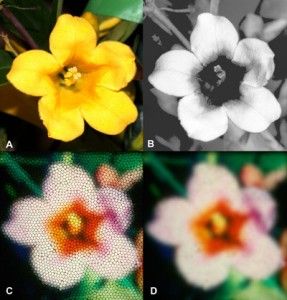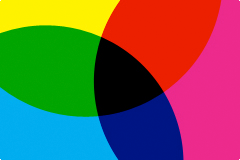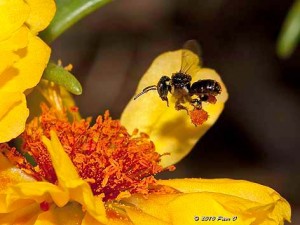Roses are red, violets are blue… stingless bees have color vision too!
A group of researchers at the University of Würzburg in Germany and Monash University in Australia have discovered that stingless bees have the ability to discriminate a wide range of color, despite research which states that bees have three classes of color photoreceptor (‘UV’ at 350 nm, ‘blue’ at 440 nm, and ‘green’ 440 nm). Compared to honeybees, stingless bees have a limited range of color detection, which serves as a testament to the heavy reliance upon color/flower discrimination in honeybees.
Overall, there are significant tradeoffs between color sharpness and color detection in bees. For example, honeybees have a high ability to discriminate between colors, but lack in their general ability to detect color. Conversely, bumblebees can detect color changes but cannot discriminate between colors as well as honeybees.
Stingless bees differ in their demands for color acuity and discrimination, given their diet and foraging mechanisms. A number of stingless bee species will forage throughout the year, and are thought to feed on one type of flower. The researchers tested two groups of stingless bees (Trigona fuscipennis from Central America and Tetragonula carbonaria from Australia) to determine if methods used for color-detection in honeybees and bumblebees, originally outlined by von Frisch, will apply to stingless bee species as well.

A) How humans see color
B) UV rays through the eyes of a bee
C) Simulated image of a bee’s trichromatic color compound eye
D) How bees would hypothetically see color
Through a series of three experiments, the authors found that two species of stingless bees were able to discriminate between colors when allowed the opportunity to locate a target (sucrose solution) on a colored paper square (either blue, purple, yellow or pink) placed within a set of gray squares. The bees were also able to distinguish the color contrast between gray squares that featured a colorful star at the center and gray squares without stars. Interestingly, the bees were less able to distinguish differences between the color boxes and the gray boxes when the contrast decreased.
This data is important for several reasons. First, the researchers were able to prove that stingless bees might be able to discriminate colors similarly to honeybees and bumblebees. Second, the threshold for differentiation between two colors was determined in stingless bees (0.05 hexagon units), and was found to be higher than in both honeybees (0.01 hexagon units) and bumblebees (0.02 hexagon units). This proves that the discriminatory abilities of various kinds of bees is different, and likely depends on the demands of their foraging mechanisms. The authors note that this may also be due to a trade-off between light sensitivity in ommatidia of the eyes of the stingless bee and the overall quality of spatial resolution. However, the signal to noise ratio would also be rather high and may allow for decreased color discrimination compared to honeybees and bumblebees.
Lastly, the authors had hoped to prove that the methodology used by researcher Karl von Frisch, who investigated bee social behavior (earning him a Nobel Prize), could still be used as a valid measurement of bee vision.
Overall, it seems that while stingless bees may not have the same color vision of honeybees and bumblebees, this article may lead us to understand more about the demands of their environment and perhaps allow us to make inferences about their foraging preferences and pollination patterns to improve the distribution of bee pollinators in the environment.
If you’d like to read more from this article, you can find it on the website for the Journal of Comparative Physiology A (reference listed below).
Spaethe, J., Streinzer, M., Eckert, J., May, S., & Dyer, A.G. (2014) Behavioural evidence of colour vision in free flying stingless bees. Journal of Comparative Physiology A, DOI:10.1007/s00359-014-0886-2.




Do they all forage on the same type of flower? Or do individuals in a species differ?